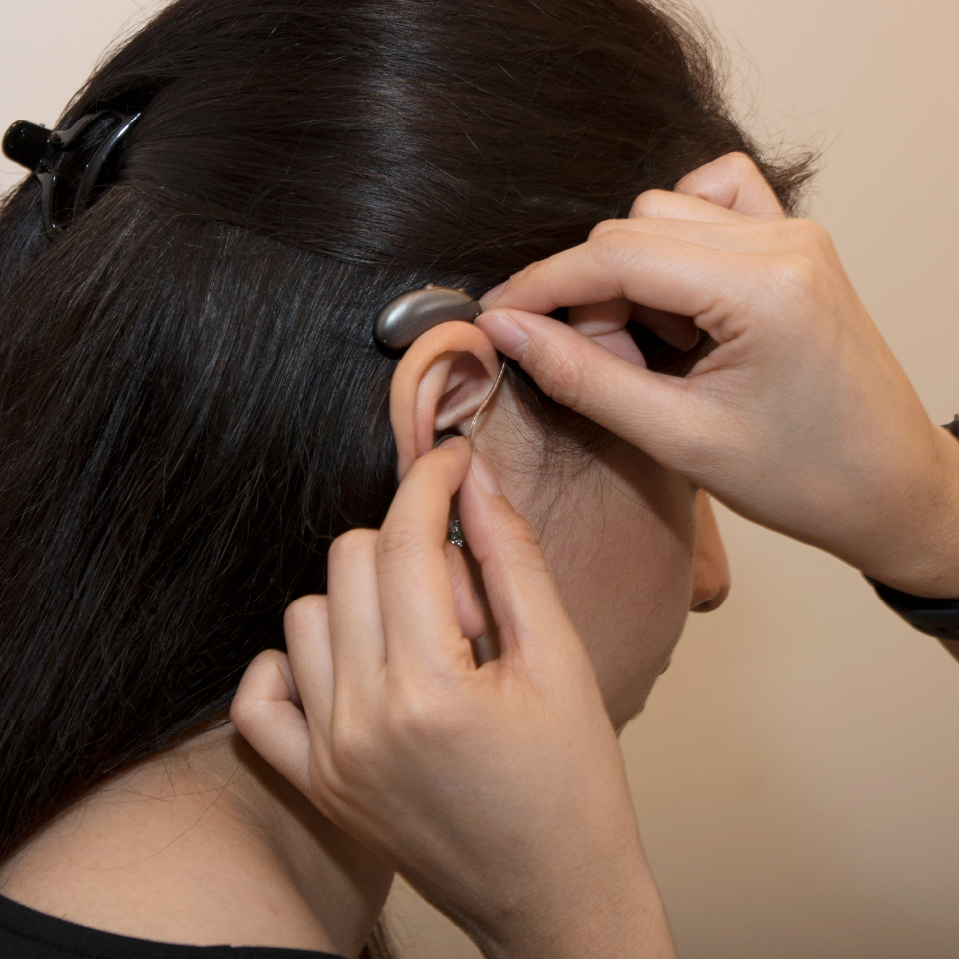
“I think it’s better for you to take this,” said the husband again. He had repeated the same thing to the wife at least three times. Holding the hearing aid in her hands, the wife still seemed hesitant as she laid her eyes on it.
It’s a Unitron RIC (receiver-in-canal) Moxi Blu she was holding, a peanut-size RIC hearing aid. One could only see a string that is used to connect the aid to the dome inserted in the ear canal. Oh, by the way, we call it a dome. It is a mushroom-shaped silicone piece that attaches to the end of hearing aid tubing and fits deep in the ear canal. They come in different shapes and sizes to accommodate the unique twists and turns of each individual's ear canal.
“But… how about this one? “ asked the lady while pointing at one of the demo models on the table. It was an ITC (in-the-canal) hearing aid. It is a small hearing aid that fills the ear canal opening. So, it is more discreet that one could not see it easily on the outside.
“Madam, that wouldn’t be suitable for your degree of hearing loss,” replied the audiologist.
“Hmm… I see. But… it’s smaller, right?” She proceeded to pick up the ITC, glanced at her husband for approval.
“I know, Darling. But it’s not suitable for you. This one's better, you see. It’s rechargeable and it uses Bluetooth connectivity. You just tried it, right? And it’s easier for you to pick up calls. Look at how tiny it is too. People can’t really notice it when you let your hair down. Just a thin string on the outside. It’s almost invincible, “ said the husband who seemed to get a little impatient.
In the end, the lady was persuaded by her husband to go for the free home trial programme and try the hearing aid at home.
They came back in a week. Apparently, the husband was very satisfied as he could tell that her wife’s hearing had improved so much. With the hearing aids on, she could even hear him calling from some distance which was never the case before she had the aids.
So, now, if this was a TV commercial, they would happily order the hearing aid as it had greatly enhanced the wife’s listening experience in daily life.
But, no. The wife decided to just return the hearing aid as she still needs to think about getting it.
Once again, if this was a TV commercial, the audiologist with a glib tongue would have persuaded the lady to get the hearing aid.
Still, no. The audiologist respected the patient’s decision, whether it is the best option for her or not.
At the end of the session, she still persistently asked about the ITC hearing aid again. As expected, she had received the exact same reply from the audiologist.
Being an audiologist, I do hope the lady’s hearing could be helped using a suitable hearing aid. Nevertheless, it is true that some people with hearing loss, particularly those at a younger age, have cosmetic concerns. Yes, you read it right. Not only those who are in their 70s or 80s can have hearing loss. In fact, aging is merely the most common one out of many other reasons for hearing loss. You would be in shock if I were to list down to you every single possible cause of hearing loss.
It is understandable for one to have the concern of being seen wearing hearing aids at a young age. After all, this has to do with the stigma that our society has towards hearing loss, assuming that hearing loss is always associated with the aging factor. Thus, it is “embarrassing” or “not looking nice” to let people see you wearing a hearing aid at a young age.
These days, the hearing aid manufacturers are trying their best to address the users' cosmetic concerns. Nevertheless, the fact that one couldn’t help but feel embarrassed for wearing a hearing aid is purely absurd. And it is even more painful for me to see one choose to put aside his or her listening needs due to the social stigma.
Try to think of a hearing aid like a pair of eyeglasses. In fact, they both basically serve almost the same purpose which is to fix one’s impairment, be it one’s eyesight or one’s hearing.
At the end of the day, one should never be ashamed of wearing hearing aids. One should never be ashamed of being seen wearing hearing aids.
Disclaimer: This article is an adaptation of a real story
Writen by: Mandy Mak Kah Kei, Clinical Audiologist TTDI, 20dB Group